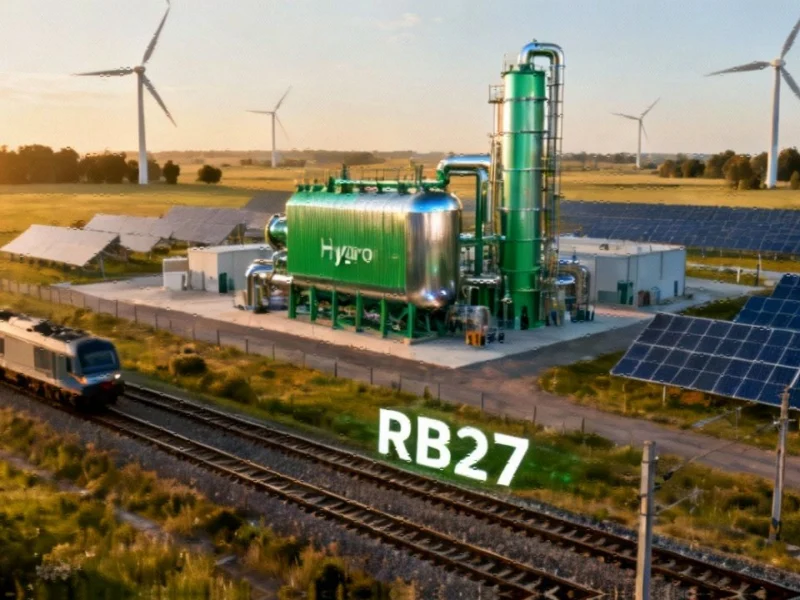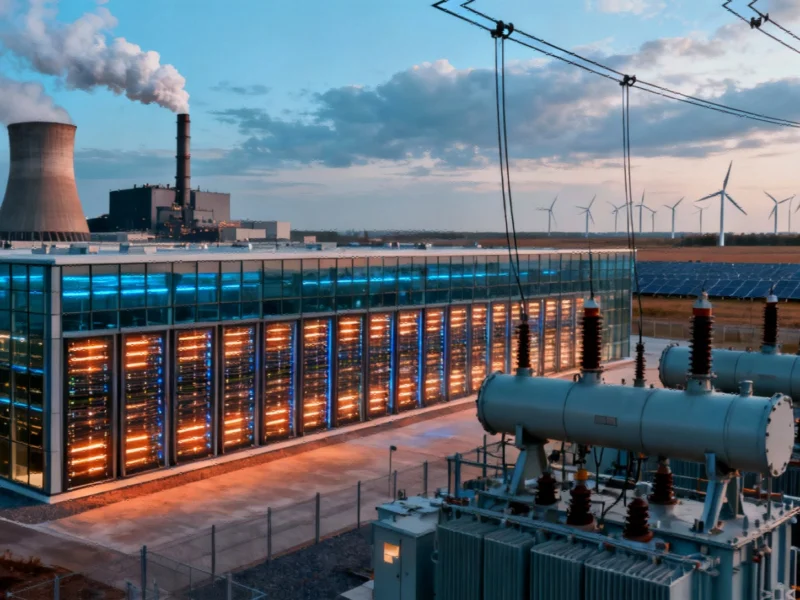Brandenburg’s Hydrogen Milestone
A major step forward in Germany’s energy transition is underway in Wensickendorf, where ENERTRAG has broken ground on a state-of-the-art green hydrogen production facility. This 4 MW electrolysis plant represents a strategic investment in sustainable infrastructure that will initially produce 380 tonnes of green hydrogen annually starting in 2026, with approximately 230 tonnes dedicated specifically to powering the Heidekrautbahn railway line connecting Barnim and Berlin.
Dr. Anne Bendzulla, member of ENERTRAG’s executive board, emphasized the project’s significance: “We’re strengthening regional value creation and security of supply while providing groundbreaking impetus for innovation. Our aim is to drive forward the energy transition in practical terms by producing green hydrogen where it’s needed.”
Integrated Approach to Clean Transportation
The Wensickendorf facility serves as the cornerstone of Germany’s first hydrogen railway joint project, developed through collaboration between industry leaders, academic institutions, and government bodies. The partnership includes Niederbarnimer Eisenbahn, Kreiswerke Barnim, Brandenburg University of Technology Cottbus-Senftenberg, and the German Aerospace Centre, creating a comprehensive ecosystem for climate-friendly hydrogen applications.
This initiative aligns with broader industry developments in sustainable energy infrastructure across Europe. The project’s integrated approach demonstrates how coordinated efforts between multiple stakeholders can accelerate the adoption of clean transportation solutions while building regional economic resilience.
Scientific Foundation and Regional Strategy
The academic partnership with BTU Cottbus-Senftenberg and DLR ensures the project benefits from cutting-edge research and technological validation. This scientific backing is crucial for optimizing hydrogen production efficiency and developing best practices for future scaling.
Dagmar Fehler, CEO of NOW GmbH, highlighted the collaborative strength: “The Heidekrautbahn hydrogen rail joint project illustrates the power of cooperation between industry, science, and politics. With green hydrogen, we’re laying the foundation for climate-friendly mobility directly on site with regional added value.”
The facility represents a key component of Barnim district’s long-term zero-emission strategy, which has prioritized renewable energy and CO-free mobility since 2008. This continuity in policy direction has been instrumental in attracting investment and fostering innovation in the region’s energy sector.
Funding and Broader Implications
Supported by approximately €25 million from Germany’s Federal Ministry of Transport through the National Innovation Programme for Hydrogen and Fuel Cell Technology, the project demonstrates the government’s commitment to advancing hydrogen infrastructure. This funding mechanism, coordinated by NOW GmbH and implemented by Project Management Jülich, provides a model for supporting similar green hydrogen initiatives nationwide.
Alexander Laesicke, Mayor of Oranienburg, captured the local sentiment: “With the hydrogen plant in Wensickendorf, we’re sending a strong signal for climate protection, innovation, and regional future viability. This project shows how sustainable mobility made in Brandenburg can succeed.”
Technological Context and Future Applications
The Wensickendorf facility’s implementation comes amid significant advancements in industrial computing and control systems that enable more efficient energy management. These parallel technological developments create synergies that enhance the overall efficiency and reliability of green hydrogen production facilities.
As the transportation sector continues its transition away from fossil fuels, the project establishes a replicable framework for other regions. The initial focus on rail transport provides a foundation for expanding hydrogen applications to commercial vehicles, maritime transport, and eventually passenger vehicles, creating a comprehensive clean mobility ecosystem.
The project’s timing coincides with important shifts in infrastructure investment patterns that increasingly favor sustainable projects with long-term environmental and economic benefits. This alignment with evolving financial priorities positions the German hydrogen initiative for potential expansion and replication.
Furthermore, the stability of such energy projects becomes increasingly valuable in times of economic uncertainty and market volatility, demonstrating how strategic infrastructure investments can provide both environmental benefits and economic resilience.
Path Forward for Green Hydrogen
ENERTRAG’s Wensickendorf plant represents more than just a single facility—it establishes a blueprint for regional hydrogen economies that can be adapted across Germany and beyond. By demonstrating the practical viability of green hydrogen for mass transportation while creating local jobs and economic activity, the project addresses multiple sustainability objectives simultaneously.
The successful implementation of this facility will likely influence policy decisions and investment patterns throughout Germany’s energy sector, potentially accelerating the country’s progress toward its ambitious climate targets while strengthening regional energy security through decentralized production.
This article aggregates information from publicly available sources. All trademarks and copyrights belong to their respective owners.



